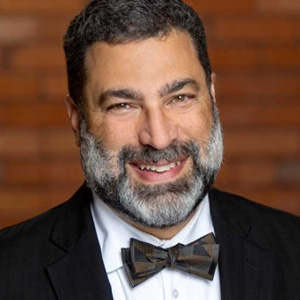Political Change and Polarization


Download and read the full report, featuring all 11 trends, here.
 Philanthropy’s major elements (nonprofits, volunteers, and donors) are dealing with a number of economic, political, and social forces that are ultimately reshaping the traditional boundaries that these actors have come to rely on to engage in long-term community problem-solving. The social contract — the compact that defined the symbiotic relationship between the public and private sectors — called on government and private philanthropy to focus on their own strengthens and act within their limitations to provide the vital services and civic participation necessary for a healthy and vibrant republic. This relationship evolved over more recent times to mean that there are activities that government can or will no longer do that philanthropy can better deliver with the support of public resources and private contributions.
Philanthropy’s major elements (nonprofits, volunteers, and donors) are dealing with a number of economic, political, and social forces that are ultimately reshaping the traditional boundaries that these actors have come to rely on to engage in long-term community problem-solving. The social contract — the compact that defined the symbiotic relationship between the public and private sectors — called on government and private philanthropy to focus on their own strengthens and act within their limitations to provide the vital services and civic participation necessary for a healthy and vibrant republic. This relationship evolved over more recent times to mean that there are activities that government can or will no longer do that philanthropy can better deliver with the support of public resources and private contributions.
Today, many say that these roles have blurred. Governments at the local, state, and federal levels are increasingly looking to markets and philanthropy to scale solutions and take on traditional government functions including transportation, human services, and public safety. Philanthropy and commerce are leading in areas normally reserved for elected bodies including providing education (public and private), supporting basic infrastructure (like water and transportation), and economic development (job training and business development). These new frontiers of public/private partnerships can be seen throughout our communities in ways both exciting and tragic, including the recent Detroit bankruptcy, the realignment of college loans financing, the auto-manufacturing bailouts, the creation of social impact bonds, and, most recently, the announcement of more than $70 million gift to the city of Kalamazoo to lower property taxes, to name a handful.
“These new frontiers of public/private partnerships can be seen throughout our communities in ways both exciting and tragic[.]”
While exciting, the lack of clarity of the boundaries for these new frontiers combined with the speed of change make for a dangerous alchemy of role confusion, false expectations of capacity, and the potential for politicization of our philanthropy. What makes this more concerning is that many of the solutions that we might identify require policymaking. In today’s polarized and caustic political environment, these changes will be hard to achieve. For evidence of this difficult environment, just analyze the current state of policymaking. In the 113th Congress, 352 laws and resolutions were enacted (2013–14). During that same time, state legislatures (combined) passed 45,564 bills and resolutions. Pew Research studies show that Democrats and Republicans are more divided along ideological lines than at any other time in the last two decades.
It is imperative that leaders in government, philanthropy, and industry work to re-clarify their respective roles to society, but they either need to be engaged in repairing our ideological divides or find ways to change policies without the help of policymakers. Thoughtful consideration and decisive action must be taken soon to address the very real needs that communities are facing during these times of social disruption and technology-accelerating change in the middle of our political dysfunction.
